CC076
Human Collagen Type IV
from human placenta, liquid, 1 mg/mL, suitable for cell culture, used for gel formation
About This Item
Recommended Products
product name
Human Collagen Type IV,
biological source
human
Quality Level
Assay
95% (Human collagen type IV, SDS-PAGE)
form
liquid
mol wt
300 kDa
manufacturer/tradename
Chemicon®
concentration
1 mg/mL
technique(s)
cell culture | mammalian: suitable
impurities
<5% Human collagen types I-III, V, VI, and non-collagen proteins
input
sample type epithelial cells
sample type hematopoietic stem cell(s)
sample type pancreatic stem cell(s)
sample type neural stem cell(s)
sample type mesenchymal stem cell(s)
sample type induced pluripotent stem cell(s)
sample type: human embryonic stem cell(s)
solubility
water: soluble at 20 °C
NCBI accession no.
UniProt accession no.
Binding Specificity
Peptide Source: Laminin
Peptide Source: Nidogen
shipped in
dry ice
storage temp.
−20°C
Gene Information
human ... COL4A1(1282)
General description
Application
Biochem/physiol Actions
Physical form
Storage and Stability
Analysis Note
Legal Information
Disclaimer
Storage Class Code
12 - Non Combustible Liquids
WGK
WGK 1
Flash Point(F)
Not applicable
Flash Point(C)
Not applicable
Certificates of Analysis (COA)
Search for Certificates of Analysis (COA) by entering the products Lot/Batch Number. Lot and Batch Numbers can be found on a product’s label following the words ‘Lot’ or ‘Batch’.
Already Own This Product?
Find documentation for the products that you have recently purchased in the Document Library.
Articles
Extracellular matrix proteins such as laminin, collagen, and fibronectin can be used as cell attachment substrates in cell culture.
Protocols
This page covers the ECM coating protocols developed for four types of ECMs on Millicell®-CM inserts, Collagen Type 1, Fibronectin, Laminin, and Matrigel.
Our team of scientists has experience in all areas of research including Life Science, Material Science, Chemical Synthesis, Chromatography, Analytical and many others.
Contact Technical Service








